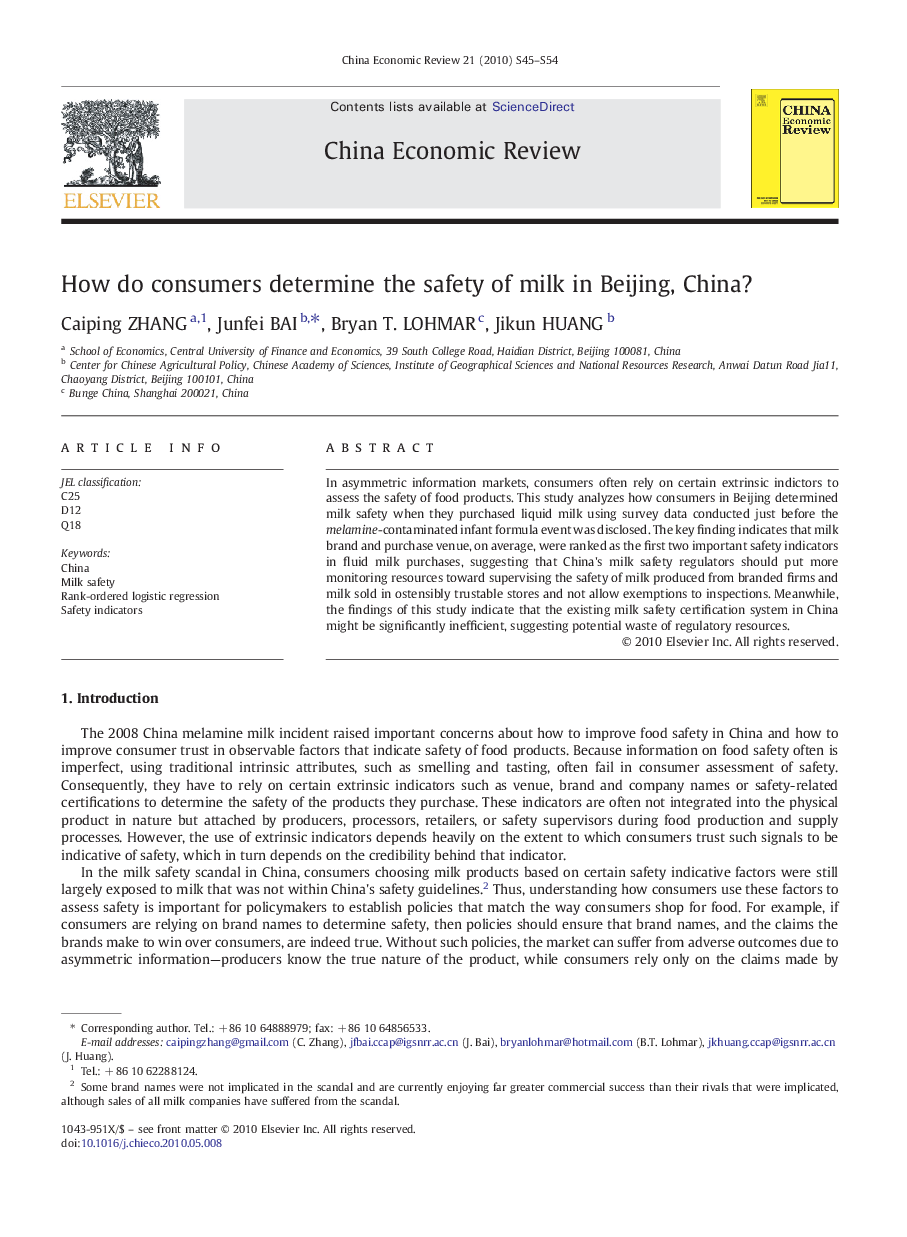| Article ID | Journal | Published Year | Pages | File Type |
|---|---|---|---|---|
| 5047840 | China Economic Review | 2010 | 10 Pages |
In asymmetric information markets, consumers often rely on certain extrinsic indictors to assess the safety of food products. This study analyzes how consumers in Beijing determined milk safety when they purchased liquid milk using survey data conducted just before the melamine-contaminated infant formula event was disclosed. The key finding indicates that milk brand and purchase venue, on average, were ranked as the first two important safety indicators in fluid milk purchases, suggesting that China's milk safety regulators should put more monitoring resources toward supervising the safety of milk produced from branded firms and milk sold in ostensibly trustable stores and not allow exemptions to inspections. Meanwhile, the findings of this study indicate that the existing milk safety certification system in China might be significantly inefficient, suggesting potential waste of regulatory resources.
